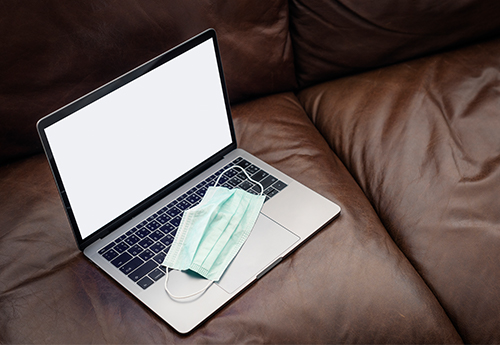Evaluating the “new normal” for commercial real estate

Executive Summary
- The way the world responds to COVID-19 will need to evolve as events unfold; we should acknowledge that we might see the future direction of travel, but it remains too early to identify the destination.
- Before jumping to conclusions about a radical “new normal,” we should recognise that our society and our world today are the product of some very powerful forces that will not easily be overturned.
- We must also acknowledge that responses which are appropriate in one location or organisation may not be suitable in another. Recent experience and cultural context will be hugely important, and organisations will require customised solutions rather than a onesize- fits-all approach.
- Restrictions on our movement and activity are likely to be relaxed gradually, lifted for different people in different places at different times. Until an effective vaccine is found, the first stage of “returning to normal” will involve continuance of defensive measures designed to prevent a resurgence of the current outbreak.
- In terms of the impact on commercial real estate, those measures can be divided into changes to our working practices and adjustments to our workplaces.
- Changes to our behaviour and work practices may include continued remote working or a partial return to the workplace incorporating modified schedules or shift working.
- There will be a general desire to avoid crowded public transport, so in the short term commuting by car, motorbike or bicycle is likely to increase. Some will avoid their previous commute by working from suburban or branch offices outside city centres or utilising local flexible/serviced office providers.
- Office occupation densities will be reduced, at least temporarily – initially managed by seating policy and behaviour rather than more expensive desk reconfiguration. Video calls will continue to replace many meetings and most business travel.
- Homeworking is only a viable option for a small proportion of workers. Industrial activity will be reprocessed wherever possible to reduce the need for direct human interactions.
- Wherever people are required to return to proximity to others, the current experiences of healthcare professionals may offer an insight into how people will respond – Increased respect for personal space; Extensive use of personal protective equipment (PPE); Frequent testing and monitoring campaigns; Rigorous contact tracing and isolation of individuals or teams when incidences of infection are identified.
- Smart organisations, smart buildings and smart cities that can effectively harness data and technology to monitor, manage and minimise the risks for individuals will be at a clear advantage – and we should expect to see an explosion of innovation in these areas over the coming months.
- Eventually we should expect to prevent the spread of COVID-19 via vaccination or treat it more effectively. At that point we will be able to move on to the next phase of the recovery – toward the true “new normal.” Only then will we see which changes will be retained as common practice once the immediate need for them to combat COVID-19 has passed.
Responses which are appropriate in one location or organisation may not be suitable in another. Recent experience and cultural context will be hugely important, and organisations will require customised solutions rather than a one-size-fits-all approach.
There are three kinds of impact that could persist beyond the immediate crisis to become embedded in a “new normal”
- First, those which would probably have happened anyway, but which have been accentuated or accelerated by COVID-19; these are the impacts about which we can be most confident in predicting they will endure. Some we comment on in the report include extension of technology-enabled flexible working and agile workplaces; health and wellness at work; penetration of online retail; de-globalisation and de-risking of supply chains; and the extension of the Internet of Things (IoT) to create smart buildings and cities.
- Second, those which will happen (or stop happening) in future because we have learned something positive from our COVID-19 experience; we can also be reasonably confident that such improvements will endure to some degree. Examples we elaborate on include the elevated importance of business continuity planning, and health & safety in the workplace; technological enablement of business process re-engineering and robotic process automation; use of video-conferencing to reduce business travel, supporting carbon reduction strategies; and new-found respect for the importance of “places”: cities open spaces, offices, shops.
- Third, those changes which are driven by fear of COVID-19 itself or the recurrence of an infectious disease pandemic; predictions along these lines rest on the assumption that avoidance of infection from virus pandemics will be a primary driver of behaviour in the future. We explain why we believe these should be treated with a greater degree of caution because it is simply too early to judge the validity of this speculation. Examples discussed include permanent de-densification of office occupation, the widespread creation of “disease resistant buildings”; the suburbanisation of economic activity; and a significant long-term reduction in public transport usage.
There will be many implications that arise from the current crisis. The world will never be the same again, and real estate will be affected along with every other aspect of business, economics and society. Whatever else happens, we cannot allow the very real ESG and sustainability challenges faced by governments and companies, and the central role that real estate must play in dealing with them, to be overlooked.
Organisations need to plan ahead, starting with short term-priorities and considering potential longer term solutions. But claims of a “new normal” that is radically different from the old appear at the very least premature and in many cases misplaced; for now, they should be treated with caution.
Read the full report here.
